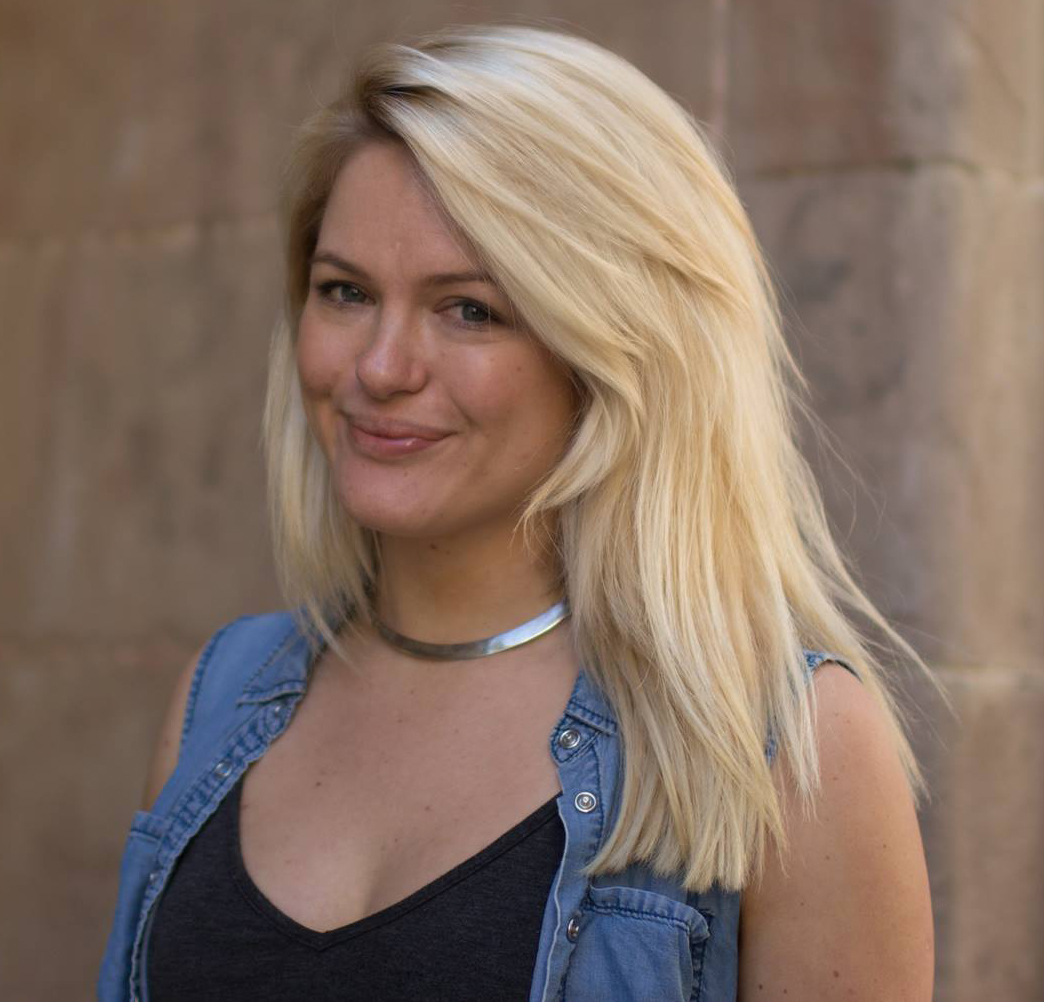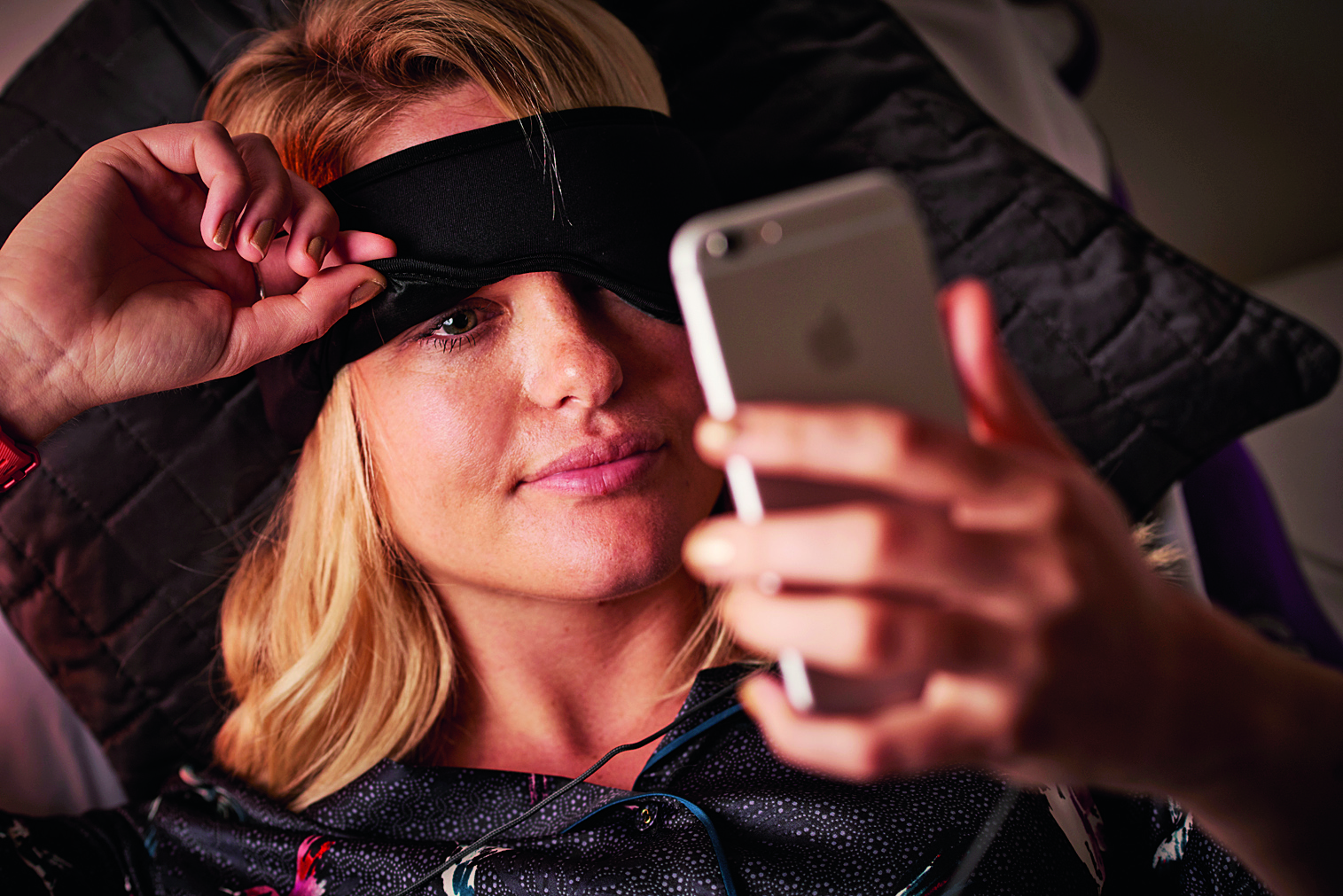

First smart cookers came for your kitchen, then smart TVs took over your living room, now smart homes are making a play for your bedroom. I know what you’re thinking: aren’t we meant to be ditching tech before bed for better ‘sleep hygiene’?
THE MISSION
Can sleep tech help a stressed-out insomniac understand her sleep patterns, chill out before bed, and get a good night’s kip?
THE WOMAN
Wearable-gadget guinea pig and stressed sleeper Becca loves to discover tech that helps us feel good and perform at our best.
Sleeping in
A new wave of sleep devices promises to use high-end sensors and science-backed analysis to improve sleep. The problem? Sleep is tricky to improve. If you haven’t hit your recommended 10,000 steps a day, you can go for a walk. Simple. If you haven’t slept a solid eight hours, you can make changes, but they won’t guarantee success. And the more you worry about losing sleep, the more likely you are to lose sleep. Anyone else feeling tired already?
It’s neat to bundle devices up under the umbrella of ‘sleep tech’, but there are different types and it can be hard to keep track. From wearable trackers and bed trackers, to lamps that send you to sleep or wake you to the sound of fake birds, as well as a whole range of one-off devices in between.
Sign up to the T3 newsletter for smarter living straight to your inbox
Get all the latest news, reviews, deals and buying guides on gorgeous tech, home and active products from the T3 experts
If it sounds confusing, that’s because it is. But as a stressful sleeper, I’m here to find out which devices will improve your sleep, which aren’t worth the money and which just look nice on your bedside table. So cuddle up and let’s get started.
Counting sheep

The S+ Sensor by Resmed stands apart from the sleep tech bunch because, well, it literally stands apart from the rest. Sitting by my bed, it analysed my movements and breathing using radio waves.
This was more appealing than trackers I had to wear or lie on. I didn’t worry once about the S+ tracking my sleep and, unsurprisingly, that resulted in deeper rest.
But accuracy didn’t suffer because it was near me, not on me. Through a quilt and pyjamas it produced detailed graphs of my sleep patterns. Seeing all of that data broken down was fascinating, but became a little overwhelming over time without practical recommendations.
The S+ also had settings to lull me off to sleep with breathing exercises, as well as nice sounds to wake me up in the morning, which was much better than hitting the snooze button a hundred times.
Next up I tried the Emfit QS, which looked rather clinical but stayed hidden under my mattress. Once there, I forgot about it because it automatically tracks sleep and analyses heart rate, breathing and movement. Like the S+ Sensor, it’s mind-blowingly detailed. But the data wears thin after a week or so, especially when I wasn’t sleeping well and a graph couldn’t tell me why. It’s more useful if you’re hell-bent on fixing a problem, like waking up in the night or struggling to get to sleep, and have access to an expert to chat with.
There are so many wrist-bounded activity trackers on the market that keep tabs on sleep. But the Fitbit Alta HR is one of the best thanks to its heart-rate monitor and new ‘sleep stages’ feature. The results weren’t as detailed as the others, but ideal for increased awareness – not long-term insomniacs. Interestingly, I found it became the only graph I checked after a few weeks because it told me what I needed to know without bombarding me with stats. It turns out even a self-confessed quantified nerd gets stressed out by data sometimes.
The land of nod

Thanks to the millions of light-colour combinations and soothing sounds, the Nox Music Smart Sleep Light has become my new bedtime and productivity BFF. I use it for bright, white light during the day alongside music and then soothing warm light on a night with ‘snowstorm’ sounds.
The lamp is great solo but also works with an app, which analyses sleep from your phone so it can deliver sleep stage specific music and sounds, like red before bed and a twinkly alarm in the morning.
Although I’m not a fan of having my phone under my pillow, the app and lamp combo worked particularly well. I went to sleep quicker and woke up feeling less angry at everything because there was no alarm to scowl at and it had woken me up at the optimum time in my sleep cycle.
The Zeeq Smart Pillow can do a lot of things, but my favourite feature was the way it played sleepy sounds as I tried to get to sleep – directly to my ears. The problem? My partner could hear all of them too.
Losing sleep over losing sleep?

An expert tells us sleep tech can be great for curious types, but not so wonderful for worriers. I asked Kathryn Pinkham, Dreams sleep expert and founder of The Insomnia Clinic, about the upsides and downsides of sleep tracking.
“The information can be useful in gaining a general understanding about sleep patterns and identifying problems,” she told me. “It can show us someone has trouble falling asleep, but no problem waking through the night. But some patients become obsessed with tracking their sleep. If they wake up and see they slept badly according to the device this changes how they think and therefore feel that day. This encourages people to micro-manage their sleep, and worry more than they need to.”
Its tracking and wake-up smarts were highly accurate, but I just couldn’t get my head around lying on technology. This is probably a personal bugbear, but definitely seemed to affect how I slept.
The most unusual of the bunch, the Thync Relax Pro, sends electrical signals to your brain. It’s for people with anxiety, the irony being that as someone with anxiety, self-electrocution sounded terrifying. With research to back up its claims and lots of panicked false starts, I gave it a go. Thync says you’ll need a few weeks to notice any difference, and I’ve felt calmer and slept better. But that could be psychosomatic. Using the Thync Relax Pro with both sleep and mood tracking over the course of six months or so would be fascinating.
Finally, I tried the Dodow. It’s the most simple of the bunch, but if you have trouble getting to sleep rather than staying asleep, it might be the most effective. It projects light into your room that you breathe along with. I can do that with an app, but this way I dozed off more easily. I can’t imagine it’ll have a huge effect on those who suffer from long-term insomnia, but it’s a nice, modern take on a night light.
Stress-free sleep

Having loads of tech on me and around me in bed often made me feel stressed-out. Ah, the paradox of losing sleep over tracking sleep! That could just be me, but as these products are marketed at worriers, I doubt my experience is unique. The tech that sat by me was the most appealing, like the S+ sensor. But, as with most wearables or health tech, it’s going to be down to personal choice and subjective goals.
Overall, I found the sleepy sounds soothing, the data fascinating and more awareness about my sleep empowering. But if you’re really struggling, you probably need to talk to a specialist and not a Fitbit.
Now why not check out The 5 best Moses baskets
Becca is a London-based features writer specialising in consumer technology, popular science and the future. She has a passion for VR/AR, wearables and space.
-
 The 5 most efficient exercises for adding strength and size
The 5 most efficient exercises for adding strength and sizeExercise Scientist Dr. Mike Israetel says these are the lifts you should prioritise if you want to get jacked and strong
By Bryony Firth-Bernard
-
 One of the best villains in gaming is coming to Xbox Game Pass for free
One of the best villains in gaming is coming to Xbox Game Pass for freeAll Game Pass subscribers are getting one of the best single-player shooters of the decade
By Rik Henderson